Mint

Mint is considered an extraordinary plant with a strong aroma. It belongs to the Yasnotkov family. Mint was named after the Greek nymph Minta, who ruled on Mount Mente in the city of Elis. Minta fell in love with the god of the kingdom of the dead, Hades, for which she was turned by his wife into a fragrant plant, which they called mint.
In other languages, mint is called:
- Mentha spicata - Latin;
- Gune Minze, Ahrige Minze, Rohmische Minze, Waldminze - German;
- spearmint - English;
- menthe verte - French.
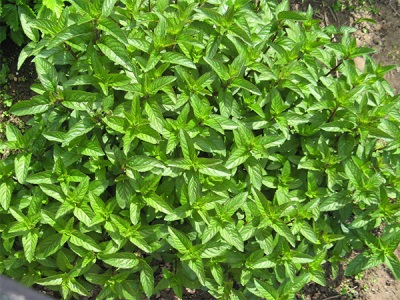
Appearance
Different types of mint may have external differences. However, in general, they still have more similarities.
Mint belongs to perennial plants, has a branching creeping rhizome. The stem is straight, branching, the shoots spread in a horizontal direction. The length of the stem reaches mainly half a meter.
The leaves have short petioles, located opposite each other crosswise, may be partially covered with hairs. They have an elongated shape, tapering from the base to the top, which ends with a sharp point. The edges of the leaves are serrated.
The flowers are painted in lilac-red tones, accumulate in whorls. In the upper part of the shoot form lush inflorescences. The flowers themselves are small.
Mint fruits are located in the cups. The flowering period is from mid-summer (July) to autumn.
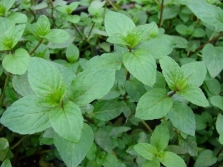
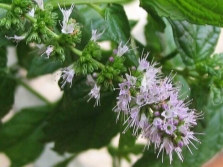
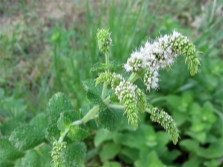
Kinds
There are over 25 species in the mint genus. There are also about ten hybrids of various species.The uniqueness of mint is that its different types have completely different metabolite content. Therefore, each species smells differently, and essential oils, depending on this, differ significantly in composition.
The most famous type of mint is peppermint (Mentha piperita). It is grown both in gardens and on an industrial scale. What is most surprising, peppermint is a hybrid of water mint (Mentha aquatic) and spearmint (Mentha spicata).
All species differ in plant height and leaf length. For example, the leaves of pennyroyal (Mentha pulegium) can reach a length of only 1 cm. And the leaves of long-leaved mint (Mentha longifolia), as the name of the species already implies, can reach 15 cm in length.
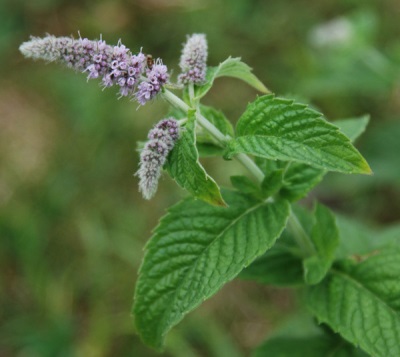
In general, the following features of different types of mint can be identified:
- English green (Mentha spicata v., in German - Grüne Minze, Ahrige Minze, Waldminze, in English - spearmint, in French - menthe verte): has smooth, sometimes slightly curling, elongated leaves. Their color is juicy green, sometimes in dark shades. All veins on the leaves are clearly visible to the eye. Fresh mint is used in the preparation of sauces and jellies. It is an ideal spice for lamb, minced meat, vegetable and pea dishes.
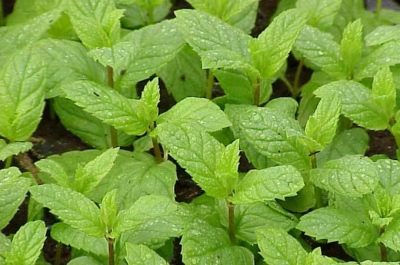
- Greek (Mentha species Dionysos): has a fresh pleasant aroma. The leaves are bright green, smooth, with serrated edges. The veins on them are clearly visible. The maximum height of the plant is 0.8 m, the minimum is 0.3 m. The flowers are painted in bright purple tones. This type of spice is ideal in combination with garlic. This mint is often used to prepare yoghurt sauces for meat or vegetable dishes typical of Greek cuisine.
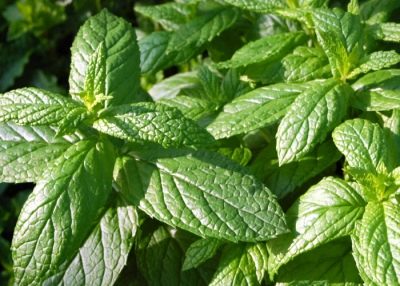
- English pepper (Mentha x piperita "Mitcham"): one of the most diverse species.It is a perennial plant, the stems of which have a red tint. The leaves are dark green, smooth, sitting on short petioles. It has a sharp spicy taste, so it is flavored with drinks, salads, desserts, added as a spice to soup or meat. With this mint, especially tasty teas are obtained.
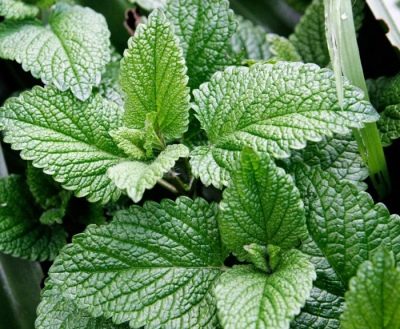
- Pepper "Nana" (Mentha x piperita var. piperita "Nana"): similar in flavor to cumin. The flowers are painted in purple tones, reaches a height of half a meter. The leaves are lighter in comparison with other species.

- orange (Mentha x piperita var. citrata "Orange"): a species with a pronounced citrus aroma and a reduced menthol content. The leaves are round, light green with a slight red tinge. Used in the preparation of desserts or fruit cocktails.
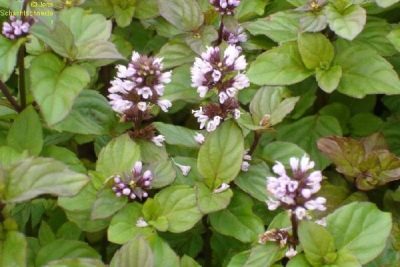
- Lemon (Mentha x piperita var. citrata 'Lemon'): has a sour lemon flavor. Like the previous type, it is used in cocktails and desserts.
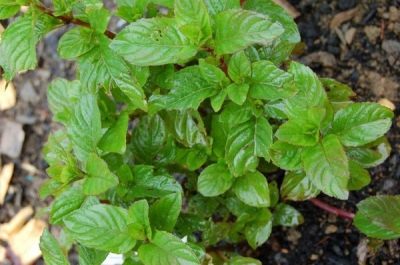
- spiky (Mentha spicata, in English - Spearmint): in appearance it is similar to the well-known peppermint, only it has a non-standard flavor of menthol chewing gum. Tolerates cold well.
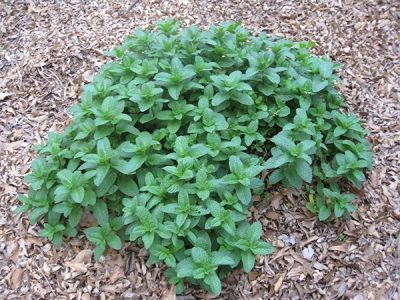
- Moroccan (Mentha spicata var. crispa): used in the famous Moroccan refreshing tea. It has a sweet smell with pleasant refreshing notes. Used in desserts and sauces. Its leaves are light green in color, oval in shape and pointed at the top.
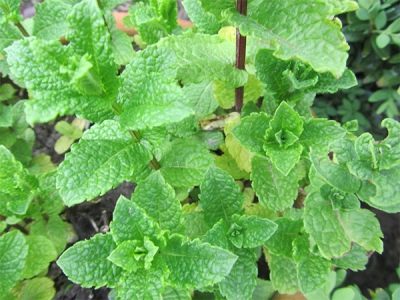
- Water (Mentha aquatic): A wild variety of mint. The leaves have teeth along the edges, their shape is oval.
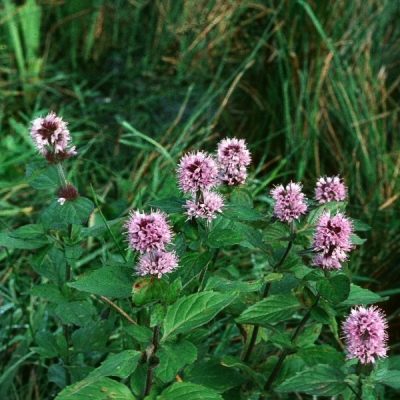
- Curly (Mentha aquatic var. crispa): its leaves are wavy and deep green, and grows in abundance.It looks like a thistle, and smells like a cross between camphor and cumin, so it goes well with vegetable and meat dishes.
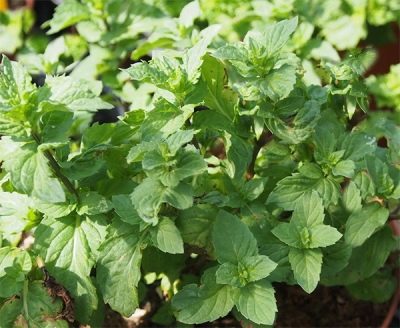
- basil (Mentha species "Basilmint"): has a spicy flavor and is often added to vegetable salads, especially with tomatoes. The flowers are bright purple, the leaves are green with a red tint. The stem is also red.
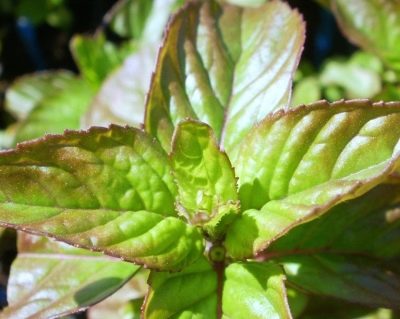
- "Mentuccia" (Mentha species "Mentuccia"): its leaves are round and small in size. It grows mainly in Italy. Flowers are bright purple. This species is used in the preparation of salads, as well as legumes and vegetable dishes. Its aroma is related to that of cumin.
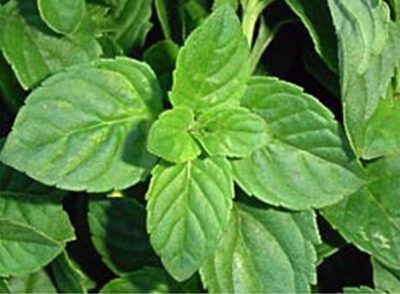
- pineapple (Mentha suaveolens "Variegata"): its leaves are slightly drooping, with a white border around the edges. The plant is not tall, the flowers are white and pale pink. The leaves have a tart taste, but are not very similar to pineapple. This mint is used in drinks, salads, sauces.
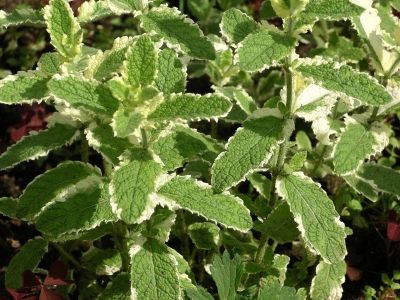
- Mountain (Calamintha officinalis): the flowers are painted in bright purple tones, the stem has four edges, the veins on the leaves are clearly cut. Combines the standard mint flavor with camphor notes.
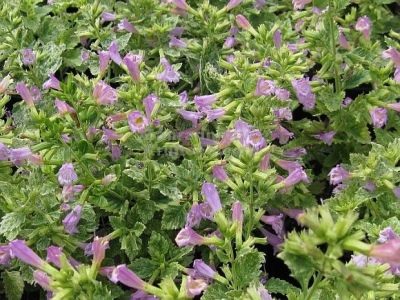
- Roman (Calamintha sp.): Known as an Italian spice. Its leaves are oval in shape, slightly expanding towards the bottom. Grows wild.
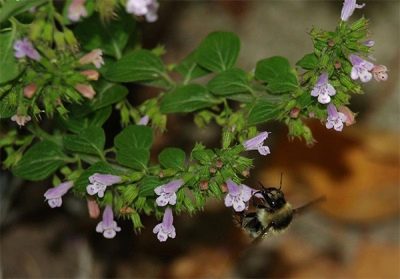
- Korean (Agastache rugosa): grown in North Asian regions. The leaves are pleasant and tender to the touch, the flowers are bright purple. Outwardly similar to hyssop, it has a pronounced aroma.
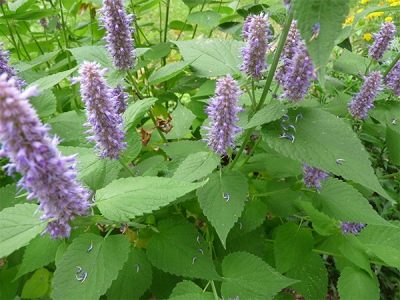
Where does it grow?
Mint is grown not only for personal purposes, but also on an industrial scale. It is cultivated in many countries around the world. Perennial varieties are grown in southern latitudes. In cold and temperate climates - annuals.
At the end of the 19th century, mint began to be cultivated in Russia, where it came from English breeders. Mint plantations appeared closer to the middle of the 20th century. Very often, the plant can be found in the middle zone of the country, but it grows throughout the state. Many species are found in Ukraine and Belarus, the Baltic countries.
Since mint loves sunlight, the best varieties are bred in the southern territories. Mint prefers moist fertile soil, without sand impurities.
It is most productively grown in the Caucasus, in the Stavropol Territory, and in the Crimea. Some species are found in Siberia and the Far Eastern territories.
Mint can grow in both garden and wild conditions. Wild mint grows on the banks of rivers and lakes, near swamps, in meadows and fields with a sufficient level of humidity.
blank
As a spice, mint is quite popular due to its pleasant refreshing smell.
- In order to get the spice, mint leaves are dried immediately after harvest in a dark place where sunlight does not reach. This allows you to save its unique flavor and color.
- After that, the leaves are crushed and hermetically packed.
- It is better to store it in a place protected from light and in a tightly closed container so that the spice delights with its aroma for a long time.
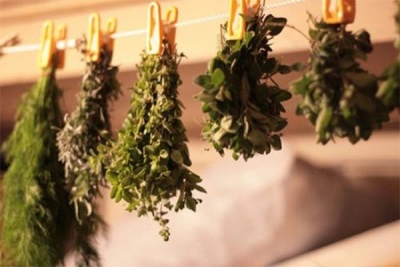
How and where to choose a spice?
It is best when you make your own spice from mint, because the technology here is not at all complicated.
But if you buy it, then consider the following factors:
- spice packaging should be opaque so as not to let in the sun's rays;
- packaging must be sealed. If you notice that it is open or torn, then it is better to refuse such a purchase;
- it's hard to make sure that the correct storage conditions have been met, but at least pay attention to how the spice is stored in the store.
If you see that crushed and dried mint is stored in a transparent bag in a bright room where the sun's rays pass in large quantities, then such a spice will not be too fragrant. Most likely, it will even have a faded color. Remember that under the right harvesting conditions, the spice will remain as green as fresh mint. Only a slight loss of color is acceptable.
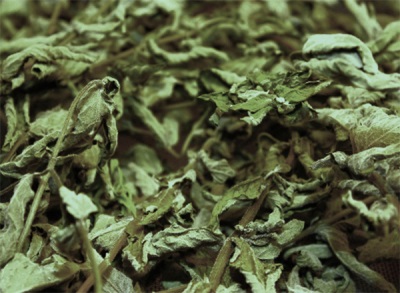
If you purchased mint in a sealed and tight package, but it didn’t please you with either smell or color, then the manufacturer obviously cheated when harvesting. It is better to continue to choose a product of another production.
Peculiarities
It is believed that the most famous representative of the genus - peppermint - historically appeared in England. Which is not surprising, because mint is added to many dishes there. Its leaves have a pungent taste. But as a feed for livestock, the plant should not be used at all. With a large amount of mint, hay spoils, and its nutritional value drops sharply. Milk yield will immediately become less, and milk with such feeding will not coagulate well.
It is believed that mint has the properties of a strong aphrodisiac, so in ancient Greece it was forbidden to give dishes with the addition of this spice to warriors.
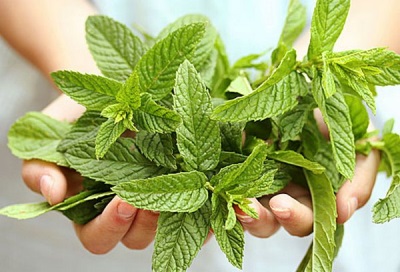
Characteristics
Mint has the following characteristics:
- grows not only in the wild, but also cultivated by gardeners;
- is an official medicinal plant;
- grows almost throughout Russia;
- grown on an industrial scale;
- has a high content of essential oils, especially in inflorescences;
- is a large honey plant.
Not everyone knows that mint also makes delicious honey.But, unfortunately, not so much of the finished product is obtained from this plant.
Peppermint in the wild has a harsh and not very pleasant smell.
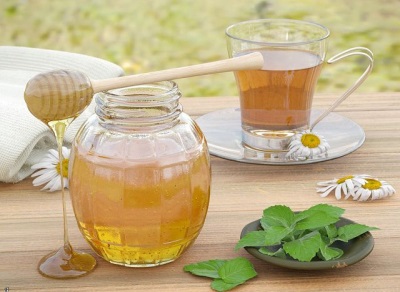
Nutritional value and calories
Mint has the following nutritional value:
| Squirrels | Fats | Carbohydrates | calories |
|---|---|---|---|
| 3.75 gr. | 0.94 gr. | 6.89 gr. | 70 kcal |
You can learn more about mint by watching the video from the program "1000 and one spice of Scheherazade"
Chemical composition
Mint is rich in minerals. The most common type - peppermint has the following components in the chemical composition:
| vitamins | Macronutrients | trace elements | |||
|---|---|---|---|---|---|
| vitamin A (RE) | 212 mcg | Calcium | 243 mg | Iron | 5.08 mg |
| vitamin B1 (thiamine) | 0.082 mg | Magnesium | 80 mg | Zinc | 1.11 mg |
| vitamin B2 (riboflavin) | 0.266 mg | Sodium | 31 mg | Copper | 329 mcg |
| vitamin B3 (pantothenic) | 0.338 mg | Potassium | 569 mg | Manganese | 1.176 mg |
| vitamin B6 (pyridoxine) | 0.129 mg | Phosphorus | 73 mg | ||
| vitamin B9 (folic) | 114 mcg | ||||
| vitamin C | 31.8 mg | ||||
| vitamin PP (niacin equivalent) | 1.706 mg |
Among the main active components:
- essential oils;
- flavonoids;
- bitter and tannins;
- menthol (approximately 60%, depending on the variety).
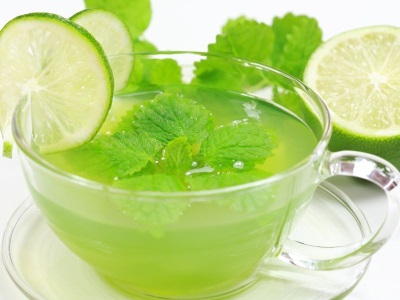
The high content of menthol causes irritation of the nerve endings, due to which there are sensations of chill and slight tingling. That is why menthol has a local anesthetic property.
Beneficial features
The list of useful properties of mint is quite extensive:
- used in folk and traditional medicine;
- is part of many drugs;
- is a means of reducing pain and spasms;
- removes excess fluid from the body;
- known for its choleretic effect;
- her smell saves from nausea;
- calms the nervous system;
- gives an anti-inflammatory effect;
- helps for hair growth;
- neutralizes bad breath;
- reduces appetite due to the menthol contained in it;
- improves brain function;
- has a sobering effect;
- tones and strengthens the human body;
- used to cleanse the skin.
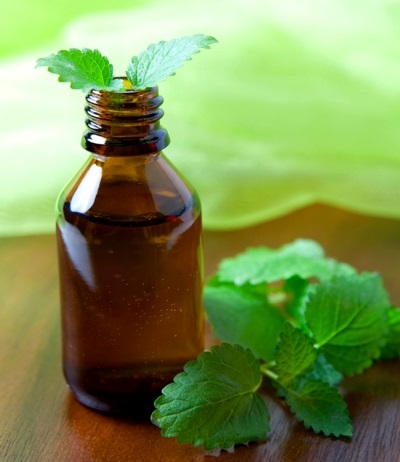
Thanks to its taste and smell, mint is an excellent mouth freshener that also kills harmful bacteria. Mint has been used as a sedative for a long time, it is not for nothing that aromatic herbal teas with mint have gained such great popularity and are recommended for drinking at night. Depending on its use, mint can both cool and warm the body.
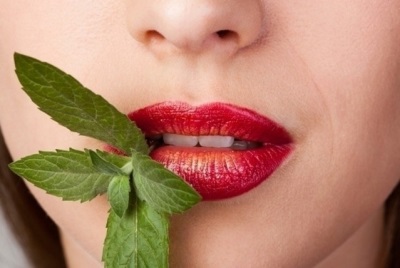
You can learn more about the beneficial properties of mint in the following video of the program "Live Healthy".
Harm
When using mint, the following negative consequences are possible:
- heartburn in overdose;
- loss of sensitivity to plant components.
With an overdose of mint, you can easily lose sensitivity to menthol and other beneficial components of the plant. For example, if you constantly and in large quantities drink mint tea against insomnia, then over time it will cease to have an effect.
Contraindications
Mint should not be used in the following cases:
- with allergic reactions;
- in the presence of varicose veins;
- in the presence of infertility or problems with conceiving a child;
- with increased drowsiness;
- with a tendency to heartburn;
- at low pressure (mint will lower it even more);
- in childhood.
It is better for children to consume mint with the permission of a doctor, since there is still no consensus on the age at which it can be included in the diet. It is also better for pregnant women to consult a specialist about whether and in what quantities they can use mint.As for hypotension, the prohibition in this case is not categorical. In a small amount, mint is useful, just do not abuse it.
Infusion
Unlike peppermint tincture, it cannot be found in pharmacies, since ordinary mint, with all the variety of useful properties, is inferior to peppermint in this, but it is great for treating certain diseases.
But you can prepare an infusion of mint and use it for diseases of the gallbladder or gastrointestinal tract. To prepare the infusion, mint leaves are poured with a glass of boiling water, let them brew warm for 15 minutes, and then take a tablespoon every three hours.

Oil
Mint is a real storehouse of essential oils. They are found in large quantities in mint flowers and leaves. The benefits of essential oils are simply invaluable.
Peppermint oil helps to tone the nervous system, recover. Its smell perfectly invigorates and activates mental activity. Peppermint oil is used for colds and loss of voice, providing a softening effect. For blood vessels, this is an excellent antispasmodic. In addition, the essential oil is widely used in preparations for the treatment of cardiovascular diseases, and also has an analgesic effect.
It is effective to inhale the aroma of mint oil when motion sickness in transport or just with an attack of nausea.
In aromatherapy, oil is also used to disinfect the room. However, do not inhale it before going to bed. Due to the invigorating effect, then it will be quite difficult to fall asleep.
Peppermint essential oil has been proven to help with painful periods and increase lactation.
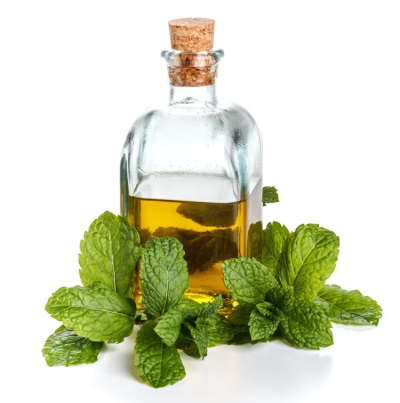
Juice
Mint juice is also a storehouse of vitamins.It is especially good for the gastrointestinal tract, but also helps to restore strength and reduce pain. Very often, mint juice is added to baked goods and various drinks.
You can get mint juice even at home:
- To do this, fresh mint leaves must be thoroughly washed and chopped in a blender or meat grinder.
- Then the leaves must be poured with boiling water, and 100 g of leaves account for 30 ml of water.
- The leaves are infused for several hours, after which the liquid is filtered.
- It must be heated and brought to a boil, and then poured into bottles, sterilized and corked.
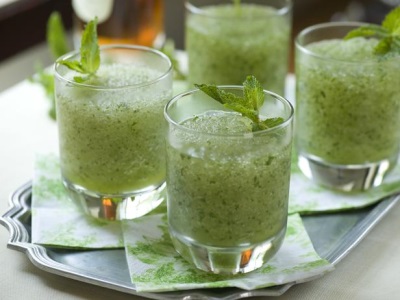
Application
In cooking
Probably everyone loves tea with mint. We have devoted an entire article to this tasty, effective and healthy combination. Check out some great recipes.
In world cuisine, mint is a common ingredient.
Its culinary application applies to many areas:
- mint is a fundamental component of oriental cuisine;
- fresh mint leaves are often used to decorate desserts and other dishes;
- mint is used in the food industry as a natural dye;
- menthol and peppermint oil often flavor foods and drinks;
- mint oil is actively used in sweet pastries;
- fresh mint leaves are added to the meat to spice it up;
- mint is added to drinks, especially soft drinks;
- mint can be added to salads, fish dishes and vegetable soups;
- mint increases the shelf life of products.
Fresh mint leaves wither quickly, so be sure to store them in the cold. But if mint is added to the dish during the cooking process, then it will immediately lose all its refreshing properties, so it must be added when serving the dish.
The refreshing effect of menthol contained in the plant is used in the production of chewing gum and sweets, as well as soft drinks. There is nothing better than homemade lemonade with fresh mint.
When using the plant in sauces, they acquire piquancy and a pleasant aftertaste. Mint is combined with almost all products: with fruits, and with vegetables, and with meat, and with desserts. Surely everyone knows the famous mint gingerbread: this chopped herb is just added to the dough for them.
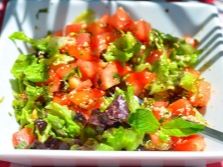
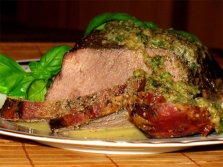
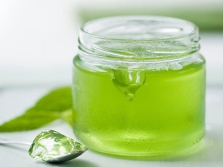
To keep pickles and homemade preserves longer, mint leaves are also added to them. This especially affects kvass, which not only acquires an interesting taste, but also stays in the refrigerator for much longer.
In Armenian cuisine, mint is added even to certain types of cheese, and in Central Asia, it flavors meat dishes.
It is not necessary to use fresh mint; when dried, it also occupies a worthy place among the components of spices.
Mint flavored and alcoholic beverages.
Surely, after all, everyone knows about the famous Mojito cocktail, which immediately loses all its freshness without mint.
homemade lemonade
You can make a wonderful lemonade according to the following recipe:
- you need several large lemons and 2 large grapefruits, 2.5 liters of drinking water, 2 glasses of sugar and about 8 mint leaves;
- lemons are thoroughly washed, cut into pieces and chopped in a blender;
- syrup is boiled: two glasses of drinking water are boiled with one and a half glasses of sugar until it dissolves completely;
- prepared lemon puree is poured with the amount of water indicated above;
- the resulting syrup is added to the drink;
- within 10 hours the drink should stand in the refrigerator;
- after this time, the drink is filtered, grapefruit juice is added to it;
- if desired, you can add half a glass of sugar or more;
- the resulting lemonade is poured into a jug, and mint leaves are added to it.

mint dessert
You can also make an amazingly delicious dessert from mint itself. For this:
- a bunch of mint, 1 protein, 75 g of sugar and the same amount of chocolate are taken;
- mint must be washed, dried and sorted out: leave larger leaves, smaller ones can be set aside;
- protein is whipped, and prepared sugar is poured onto a flat plate;
- mint leaves are dipped first in protein, and then in sugar;
- the leaves are laid out on a separate plate or tray, covered with napkins, and dry during the day;
- chocolate is melted in the microwave;
- candied leaves must be dipped in melted chocolate halfway and put on a separate plate;
- dessert is removed for an hour in the cold.
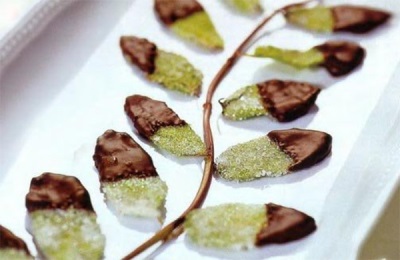
In medicine
Often used in medicine peppermint tincture. It is very effective due to the presence of a large number of medicinal properties.
Mint is generally recognized as a medicinal plant. It is part of many herbal preparations, as it has a wide range of medicinal properties.
Most often it is used:
- to calm the nervous system;
- to eliminate rashes, skin irritations;
- as a choleretic agent;
- to reduce pressure;
- with nausea;
- to dilate blood vessels;
- with diseases of the gastrointestinal tract;
- when coughing;
- to restore potency;
- in case of poisoning;
- as an anti-cold remedy;
- with intestinal disorders;
- for the treatment of heart diseases;
- to reduce pain.
With the help of mint, stones are removed from the gallbladder. It is actively used both internally and externally.From time immemorial, in folk medicine, the leaves or oil of the plant have been used to reduce headaches. Due to the high content of menthol, mint helps to reduce pain during menstruation in women. In chronic liver diseases, mint infusions are also useful.
Very often, mint is used to treat toothache or diseases of the oral cavity. It has a disinfecting effect and destroys harmful microorganisms, so it is useful to rinse your mouth with mint decoctions.

Essential oils and extracts are useful for colds. You can do inhalations to alleviate the cough. In addition, it helps with nasal congestion.
In cosmetology
Due to its antiseptic action, mint can effectively deal with rashes or skin irritations. Cosmetics manufacturers, knowing about the benefits of the plant, actively use mint extracts in their products.
It is known that the plant helps to tone the skin, but at the same time soothe it, reduce irritation to a minimum. Peppermint works effectively as part of oily skin care products, providing a drying effect and narrowing the pores. The herb is also used for rejuvenation, as it allows you to smooth the skin and cleanse it of toxins. Mint infusion, applied to the skin of the face, can easily replace some expensive nourishing cream.
The plant is used in the production of shampoos and hair masks, as mint promotes their rapid growth by stimulating blood circulation, and also prevents dandruff and cares for the scalp.

When losing weight
Mint is actively used in the difficult fight against extra pounds. It is known that the smell and taste of mint significantly reduces appetite, due to the high content of menthol in the plant.Peppermint tea helps reduce hunger and also has a general health effect.
You can also periodically inhale the aroma of mint, fighting off your appetite and thereby reducing your daily calorie intake. If you breathe peppermint essential oil every few hours during the day, you can find impressive results in a week. In combination with green tea, mint will also help cleanse the body of toxins.
To prepare a fragrant mint drink for weight loss, take a few leaves of fresh or dried mint and pour them with a glass of boiling water. Within 15 minutes, the broth is infused. Then it is filtered and drunk little by little throughout the day. This will allow you to get rid of harmful snacks between meals.
In addition, mint relieves the body of toxins that lead to the formation of cellulite. If you add ginger to tea, you can significantly speed up your metabolism. However, you should be careful that excessive consumption of mint tea, and even in combination with ginger, does not lead to heartburn and stomach irritation.
At home
Household use of mint is practically not limited to some areas. It is actively used:
- for the prevention of diseases;
- for the treatment of diseases;
- as a decoration of dishes;
- as a spice or condiment;
- in aromatherapy;
- cosmetics;
- in perfumery.

Mint is a unique plant that is effective not only in medicine, but also in other areas of human life. A pleasant smell is often used in some perfume compositions, bringing refreshing and invigorating notes to them.
Varieties
Breeders have made great progress in breeding different varieties of mint. To date, there are a large number of them not only in Russia, but also abroad.At the same time, the varieties do not have a specific belonging to the species, so it can be assumed that not only the well-known peppermint is the basis for breeding for many varieties.
There are varieties that were obtained back in the Soviet years. However, to this day they do not lose their importance. These include:
- "Krasnodarskaya-2": the height of plants of this variety exceeds a meter, the content of menthol in them is below 50%;
- "Prilukskaya-6": the variety was bred a long time ago. Mint reaches a height of a meter, it contains approximately 50% menthol. It takes root better in warm regions, as it does not tolerate cold;
- "Kubanskaya-6": plants reach a height of up to a meter, the menthol content in them is higher than in previous varieties, but such mint does not tolerate cold well;
- "Drug-4": already based on the name, it has medicinal properties. It can reach a height of more than a meter, and the menthol content in mint approaches 60%;
- "Riddle": the variety was bred in Ukraine. It has a high content of menthol, the rate of which is slightly lower than 65%;
- "Medichka": in this variety, the menthol content reaches 67%. This mint tolerates winter much better than previous varieties.
There are many foreign varieties of mint bred in Bulgaria, the Czech Republic and other European countries.
cultivation
Growing mint is not too difficult, as it does not require special care. You need to choose those varieties that are most suitable for the intended climate in which mint will be grown. There are varieties that do not tolerate cold well, and this must be taken into account. It is advisable to provide maximum sunlight and plant the plant somewhere in the open.
You can grow mint at home, in a flower pot. She takes root remarkably, but requires top dressing.It is better to put it on a window where a large amount of light enters.
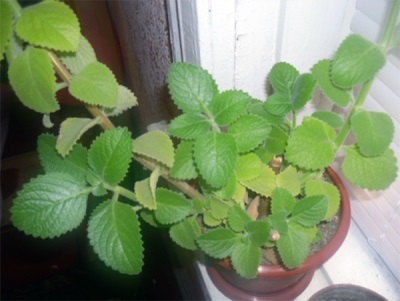
To learn how to grow mint at home on a windowsill, watch the following video.
The soil should be moist, without sandy impurities. Mint is propagated by cuttings or seeds. It can be sown directly into the ground. Propagation by cuttings is often used in order to preserve all the useful properties of the variety.
Mint is planted either in the middle of spring or in the second half of summer, closer to August. It grows at a high rate, so it is better to somehow protect it from other plants so that it does not survive them.
Periodically it is required to fertilize the plant, but not too often. Watering should be moderate so that the water does not stagnate. But at the same time, the earth should not be constantly dry.
Mint is prone to attack by pests, like many other garden plants. Processing with harmful chemicals is prohibited; in this case, mint will lose its beneficial properties and become unsuitable for consumption. Therefore, you should immediately plant it away from vegetables or plants that are often visited by garden pests.
When planting, a certain distance between plants must be observed - usually at least 0.3 m. Between rows, the distance can be left larger - 0.4 m. At least several times during the summer, the beds should be loosened and cleaned of weeds as often as possible.
Watch the following video - you will learn a lot of interesting things about the properties of mint.
Interesting Facts
- Our ancestors believed that regular use of mint leads to an extension of life, so the plant was very revered and actively cultivated.
- It has been proven that mint was mentioned in the Bible, and it was also found in the tombs of the ancient Egyptian pharaohs. Many other historical references boil down to the fact that it was known to man even before our era.
- There is a popular belief that a mint leaf in a wallet will attract wealth.
- Dream Interpretations say that if you dream of mint, then this means the upcoming fun and eventful events.
- It is believed that mint originated from the Mediterranean countries, hence the legend of the beautiful nymph Minta. However, there is no justification for this yet, as the British argue with this version.
- Many centuries ago, mint leaves with honey beat off the smell of alcohol.
- It was believed that if you stuff your pillow with mint leaves, you will only have good dreams.
- Mint spirits were once made in Jerusalem, and the plant was also added as a condiment to lamb dishes.
- In Asian countries, not a single soft drink could do without mint before. And not only refreshing, because mint was added even to milk teas.
- Hippocrates also spoke about the beneficial properties of mint. He himself used mint infusions to whiten his teeth.
- In Italy, mint used to be added to wines. Thus, the drink was refreshing and did not leave an alcoholic aftertaste.
- In ancient Rome, mint was considered an activator of mental activity, so wreaths were woven from the stems with leaves, which the Romans put on their heads.
- The Slavs added mint even to cabbage soup. And traditional Russian mint kvass perfectly quenched thirst in hot weather and had a long shelf life.


















The aroma of mint really dulls the appetite for some reason. I drank a glass of water before meals (5 minutes before meals), and then sniffed mint. Managed to reduce the amount eaten much.
Mint is the best mood booster!